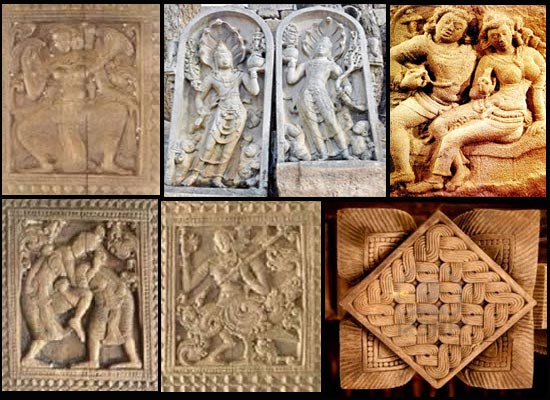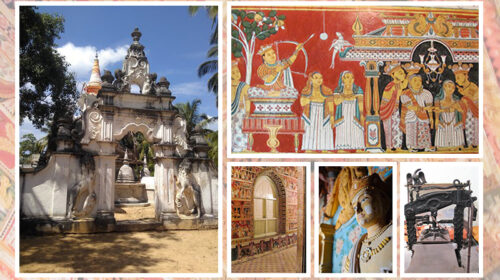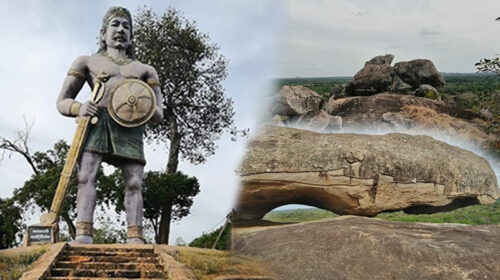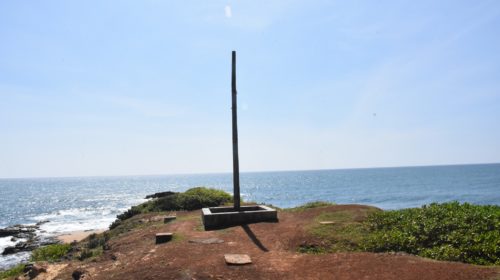Sinhala Decorative Styles
About sinhala Decorative Styles
Many plans utilized for craftsmanship and industry during the Kandy Kingdom can be seen among the frescoes of sanctuaries and sanctuaries having a place with the Kandy time frame. They are essentially partitioned into four sections: heavenly, creature, plant and lifeless.
Many plans utilized for craftsmanship and industry during the Kandy Kingdom can be seen among the frescoes of sanctuaries and sanctuaries having a place with the Kandy time frame. They are essentially partitioned into four sections: heavenly, creature, plant and lifeless.
Divine


The sun and moon are viewed as heavenly. These are images of everlasting nature. From days of yore, the sun and the moon have been utilized as images of flourishing and success. In portraying the sun, it is portrayed with a human face. The magnificent style radiates through the picture of the sun, and the delicacy of the moon is obvious. When of the Kandy Kingdom, the portrayal of the sun and the moon on the two sides of the mythical beast pandals in the sculpture houses, just as on the wooden and metal trimmings, was a well known element of the time because of its creative elements. During the rule of the Kandy Kingdom, the banner of the Four Coral Districts addressed the Sun and the Moon.
Animals
Living creatures as well as anecdotal creatures were found in the Sinhala embellishing designs. Gajasinghe was referred to for his fanciful animals like the ivory reptile, mythical serpent, heron and kindura.
Herunda bird
 It is a fanciful bird with two heads twisted, two wings and a long tail. This picture was utilized by Sinhala specialists to design metal wood and ironwork. The Thun Korale banner contains the picture of this heron bird and the wooden mainstays of the Ambakke Devalaya just as the Danture Rajamaha Vihara can be seen.
It is a fanciful bird with two heads twisted, two wings and a long tail. This picture was utilized by Sinhala specialists to design metal wood and ironwork. The Thun Korale banner contains the picture of this heron bird and the wooden mainstays of the Ambakke Devalaya just as the Danture Rajamaha Vihara can be seen.
Kindura

The account of Sanda Kinduru Jataka makes reference to a Kindura. It is an extremely renowned creature picture among the Sinhala Buddhist individuals. Snow figures attracted by the workmanship custom of Kandy can be seen when the moon addresses the Snow Jataka. The upper sessions included two cutaways, for more straightforward admittance to the higher frets. These ice pictures can be found in the wall paintings of the sanctuaries in Kotte, Thelwatta and Kelaniya.
Sera Pendiya
The plan depends on the body of a swan, the top of a lion and the top of a mythical serpent. Otherwise called an anecdotal model, it is otherwise called the sparrow. Utilized for wood carvings just as ivory carvings. Utilized for roof artworks.
The dragon

This additionally falls under the class of theoretical models. The tusks of an elephant, the feet of a lion, the ears of a pig, the body of a fish are additionally made by consolidating monkey eyes, vivid leaves and crocodile teeth. This is a show-stopper from the Kandyan time frame and has been utilized as a model in sanctuaries. Pantheon plans are generally seen close to the doors of sanctuaries.
Gajasinghe
This is a plan of an anecdotal creature. A lion with an ivory head. This can be seen on the Kandy Arts Flag. The picture of Gajasinghe has additionally been utilized by old Sinhala experts to adorn things for Korawakgala in the fourteenth century. Comparable cobblestones can be found in Ganegoda, Gadaladeniya, Dondra and Medawala sanctuaries.
The swan

The swan is utilized to represent immaculateness. Utilizations swan picture two by two and singles. This is planned as a couple of swans and four swans connected beneath. It is a delightful style utilized among Hindu and Sinhala enhancing styles. This can be utilized to make plans with balance. This swan picture is utilized on old banners and roofs.
The Lion
This lion image is commonly found in ancient stone carvings. Lion images have also been used for moonstones.
Botany
Botanical ornaments of the Kandyan period can be divided into two categories, imaginary and standard. Pichcha flower, Lotus flower, Watake flower, Pineapple flower, Sapu flower, Liya wela and Pala petals can be mentioned as standard patterns while Parasatu flower, Nari Latha flower, Kadupul flower, Mahari and Kathira flower are the imaginary plant patterns used in this period. These designs are created with the help of flowering plants found in the environment.
Narilatha
This is a flower used by ancient craftsmen. The lower part of the narcissus flower has petals and the upper part has the shape of a woman. The vines on both sides are very beautiful. Narilatha flower is used in a box in the Silver Temple. This narcissistic flower is used for murals as well as copper, brass and clay pots. In murals this is used for the outlines with yellow, black and red.
Pottery and Ceramics Kathira flower
Made of dotted petals. This is also known as the scissor flower as well as the scissor flower. This is a fictional flower and has been used to fill in gaps in murals.
Sword flowers
There is a concept of Kadupul Na as a flower belonging to the world. It is beautifully colored in yellow, red and black.
Chinese flower
This bloom has been utilized commonly to finish the setting of wall paintings. It is likewise planned as a branch from the lion’s mouth. This is likewise an anecdotal blossom and looks peculiar looking like a bloom branch.
Lotus flower
The lotus blossom is regularly utilized in manifestations. The lotus blossom is utilized to represent virtue and is utilized in Buddhist craftsmanship to represent adoration. Sinhala creators have made the lotus bloom in a roundabout shape. The lotus blossom is a bloom utilized for moonstone. The lotus blossom was utilized for wood and stone carvings and was likewise used to fill in holes in paintings.
Herb petals
Heartland specialists utilized the palapeti style for their craftsmanship as well as for their beautification and design. The leaves are likewise utilized as an example around craftsmanship. The palavet configuration is finished by craftsmen in yellow and red.
Pineapple flower
This is a flower that can be drawn using geometric instruments. This is used as a standard symbol. Made with a nut in the middle and bare leaves on both sides. The pineapple flower design is very much used for decorating brass and silverware.
White flower
This is also a decorative pattern used to fill in the gaps in the Kandyan period murals. The red background is colored yellow and they are finished with a black line. This is a two-dimensional colored flower.
The flower of the fence
The flower of the fence is used as a standard design. This is a design used to fill in the gaps in the background of the temple murals. The fence is widely used by upcountry artists as a standard decorative design. Flowers can be seen on the fences of temples such as Lankathilaka, Medawala and Ragaldoruwa.
Binara flower
Consists of a standard decorative design with four petals. The middle part of the flower is circular. The flower petals are similar to the petals of the lotus flower, a decorative design used to decorate temple carvings and temple canopies.
Liyawela
Liyawel or Lathawa is a beautiful motif that spins on both sides. It is made up of a necklace and a flower. Liyawel is a decorative design commonly used by Sinhala artists. It is also made by twisting two vines together. Among the old decorative patterns are geometric patterns that belong to the inanimate category.
Inanimate
Geometric figures made of geometric figures such as arimbuwa, galbinduwa, rope, vine, vortex, havadiya, comb, kundirakkan, bopathura, tundath work etc. are called inanimate ornamental patterns.
The beginning
A circle line inserted between two lines. Wood carvings, brass carvings, and canopy decorations were in the middle. Decorated with a flat color when coloring.
Stone drop
The stone drop has been used as a simple design. This is designed in such a way that a circle joins in the middle of the shape of a piece. The stone dot has been used to decorate the moonstone of the Polonnaruwa period. It was also used for the sleek designs of wood carvings.
Management Rope
The rope is used for weaving such as murals and reed mats. It is also used as a geometric decoration. This is a completely linear creation. There are two types of rope. As a single rope and a double rope. The rope on both sides looks like a weave. The Dumbara mat pattern is a multi-layered design.
Hurricane
The vortex is a very simple decorative design created by combining a curved line and a dot. This is divided into a single vortex and two vortices. It is used in many industries for industries such as metals and laxatives.
Hawdiya
This is also a geometric pattern species. Chain tissue style is widely used in metalworking and sewing.
Comb
The comb is created by drawing lines that run parallel between two lines. Used as a simple design, it was widely used in Laksha and wood work.
Dwarfs
Kundirakkan is likewise an element of standard enrichments as a periphery plan. This also is done in mathematical shapes. This is perhaps the most broadly utilized wood carving during the Kandy Kingdom. Kundirakkan adornments have been utilized to enhance the rectangular windows of the Ambakke sanctuary.





Very useful